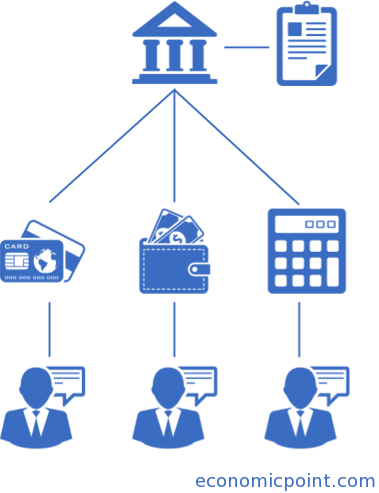What is the Ethereum Platform
Ethereum is a decentralized public platform that can run applications based on a blockchain. Anyone can create applications for the Ethereum platform. Ethereum provides a cryptocurrency called Ether. Programs running on Ethereum can make automatic payments with Ether.
Ethereum is receiving a lot of interest by investors and corporations.
It is based on a novel and complex technology. There is a wide range of possible Ethereum applications.
What is the Ethereum Platform for?
To understand it’s usefulness, let’s see how many services work today: they are based in a what is called a “central agent”. The provider of the service is the record keeper that coordinates and validates the transactions related with the provided service.
For example, a bank keeps a database with balance records. When a bank transfer is done, at least one bank (agent) must intervene, to check the ledgers and update the balances.

Ethereum will change the way many services operate: they won’t need a central agent anymore.
Features of Ethereum
- Decentralized: The Ethereum network is based on thousands of computers that operate 24/7 and that are distributed all over the world. This is why many call Ethereum a “World Computer”.
- Cryptocurrency: it provides a cryptocurrency that can be used to make payments. For example, an application can be programmed to make a payment to a person when it rains. The payment will be automatic.
- Automatic: programs can run safely without human intervention.
- Open: Anyone can upload apps to the Ethereum network, and anyone can participate in the network of nodes that executes the apps and verify transactions.

Benefits of Ethereum
- Security : Ethereum is based on the blockchain technology, it can avoid business fraud in many cases.
- Reliability: Transactions are validated by thousand of computers.
- Unstoppable Apps: Interconnected nodes are working 24/7 all over the world. It’s extremely difficult to stop Ethereum.
- No need for intermediaries: Many services can run without intermediaries or middlemen.
How does Ethereum works
Once an app is in Ethereum, it can execute transactions automatically when certain conditions are met. All the network verifies the execution of the transactions: that the conditions were met, that the code ran correctly, that there was enough balance in the source account and that the destination account was the intended.
Anyone can create an account in the Ethereum network. The Ethereum accounts can store balance of Ether.
Ethereum is based on the blockchain technology. An analogy of the blockchain technology is a shared spreadsheet. Each node on the network has a copy of the same spreadsheet. This spreadsheet contains all the transactions of the cryptocurrency from the beginning of times. Each time a new transaction is added, the nodes verify it by a complex algorithm and the transaction is added to the shared spreadsheet.
Ethereum has an embedded programming language. This feature allows Ethereum to execute transactions like smart contracts or derivative contracts, like contracts for difference. This is not possible in Bitcoin.
The Ethereum Network
Anyone can participate in the Ethereum network as a “miner”. But why would you spend money and time as an Ethereum miner? Because Ethereum rewards miner with Ether.
Miners “view” the list of pending Ethereum transactions. They group together some transactions into blocks, according the included fees and other factors. They spend computational power and electricity and produce a code called hash that proves that a miner has “worked” the block. If the rest of the network considers the hash and the block valid, the block gets into the blockchain. The miner that worked the block gets 5 Ether (about $1000 at current prices) plus all the fees included in the transactions.
Impact of Ethereum in the Economy
If many services and users start using the Ethereum platform, the impact could be huge. Network effects will make even more users and providers join the Ethereum network, moving fees to the “traditional” economy, to the Ethereum network. Business in sectors like insurance and finance, will be the first to join.
AXA, a big french insurance company, uses Ethereum in his flight insurance product. It allows passengers to receive a compensation if there is a flight delay of 2 or more hours. It’s an example of the use of Ethereum for an smart contract, that executes automatically when certain conditions are met. Clients of AXA can trust in the app, because it’s hosted on the Ethereum network.
A lot of companies are watching Ethereum with interest and are investing in it. JP Morgan, Microsoft, Intel and more than other 20 companies joined to create the Enterprise Ethereum Alliance, that aims to facilitate Ethereum adoption. At the same time, several banks are testing Ethereum in their internal systems.
The future of Ether and other cryptocurrencies
There are other digital currencies and similar systems competing to gain traction. At the same time, several cryptocurrencies can complement each other, by specializing in certain kind of transactions or features. For example, Dash (a cryptocurrency) is speedy, Monero and ZCash provide anonymity, Bitcoin is very secure. A new price stabilized cryptocurrency could emerge in the future.
Ethereum set itself apart by it’s ability to execute smart contracts and financial derivatives, like contracts for difference. By incorporating a programming language, it can have several applications still to be discovered.
The future will see a growth of many cryptocurrencies. An interesting option, to cryptocurrencies investors, is to invest in a basket of the most promising cryptocurrencies, being Ethereum a part of that basket.
A word of caution: Ethereum is a new technology in it’s early age, and it very difficult to evaluate it future success and reach.



